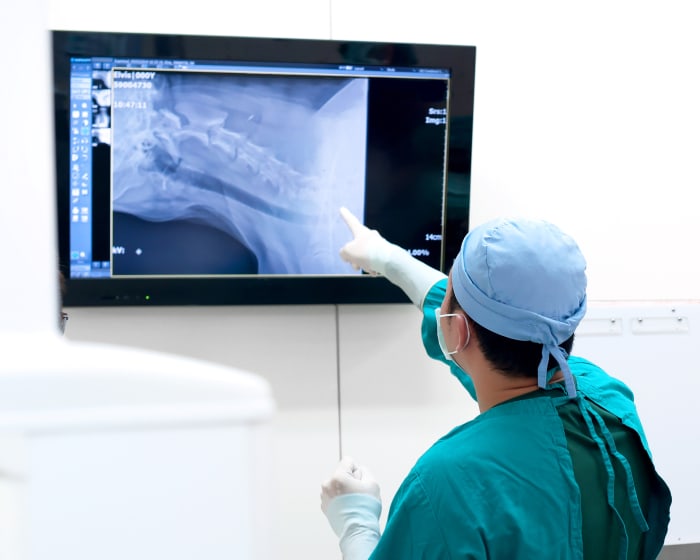Veterinary Diagnostic Laboratory
Electromagnetic radiation and other technologies are used for diagnostic imaging. This helps us produce highly detailed images of your pet's internal systems.
At Animal Emergency Clinic, we leverage advanced tools that allow us to accurately diagnose your pet's medical condition. We offer many services, from digital radiology to ultrasound, ECG/EKG and more.
Using our diagnostic imaging capabilities, we're able to efficiently produce accurate diagnostic data about your pet's condition and offer immediate options for treatment.

In-House Pet Laboratory & Vet Pharmacy in St. Louis
We conduct tests and receive results quickly in our in-house veterinary laboratories so that we can diagnose your pet's symptoms and start treatment as soon as possible.
Our pet pharmacies in St. Louis are stocked with a wide selection of prescription diets and medications, providing us with quick access to any medications your pet may need while in our care.

Our Diagnostic Services
At our in-house veterinary diagnostic labs, we can offer advanced diagnostic testing that allows our vets to accurately diagnose your pet's medical issues.
- Radiography (Digital X-rays)
We can use a radiograph (digital X-ray) to check your pet's internal systems to reveal information we may not be able to see from the outside.
Radiography is painless, safe and non-invasive. It uses only very low doses of radiation so even pregnant females and very young pets are able to have this procedure.
Radiographs can be used to assess organs and bones, and to diagnose conditions including fractured bones, spinal cord diseases, chronic arthritis and some tumors. Radiography is available at both of our locations.
- Ultrasound
Using diagnostic imaging, our veterinary professionals can create extremely detailed images of your pet's internal structures.
With ultrasound imaging, part of the body is exposed to high-frequency sound waves to produce images of the inside of the body.
Since ultrasound images are captioned in real-time, we're able to see the structure and movement of your pet's internal organs, in addition to blood flowing through the blood vessels.
Because our vets have access to this valuable technology in our in-house laboratory at our location in O'Fallon, your cat or dog's condition can be quickly diagnosed and treatment can begin sooner.
- Endoscopy
An endoscope is composed of a tiny camera with a light that's attached to the end of a flexible tube.
When a veterinarian performs an endoscopy, the long, thin tube is inserted directly into the body to observe internal tissue or an organ in detail.
Minimally invasive endoscopes can be inserted into bodily openings such as the mouth or anus. Endoscopy is available at St. Louis Animal Emergency Clinic in Kirkwood.
- Bloodwork
At both of our vet labs in St. Louis we are able to run a number of common and specialized blood tests to determine the health of your pet, and to diagnose illness.
Some of the most common veterinary blood tests we do are CBC (complete blood count), white blood count, hemoglobin and MCHC, hematocrit, platelets, eosinophils, and blood serum profile.
- Urinalysis
Urinalysis is a key diagnostic test that provides your vet with essential insights into the physical and chemical properties of your pet's urine.
Urinalysis is primarily used to assess the health of your animal's kidneys and urinary tract system, but it can also be helpful in detecting issues in other organ systems and is important for diagnosing metabolic diseases such as diabetes.
This is a valuable diagnostic test for both healthy and sick animals and should be included in any comprehensive evaluation of your pet's overall health.
- ECG / EKG
If your veterinarian performs a physical examination and suspects your pet may have a heart disorder, we usually take chest X-rays and an electrocardiogram (ECG / EKG) at our location in O'Fallon.
This procedure can be completed easily and quickly. It reveals data that may be integral to your pet's diagnosis. In other cases, a cardiac ultrasound may be required to identify disorders in the chambers of the heart.